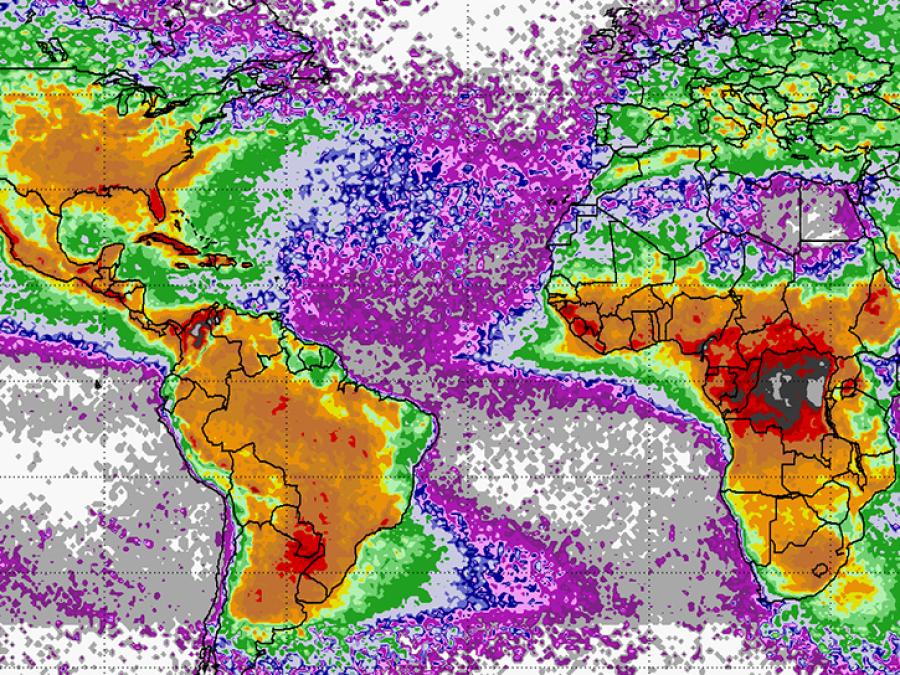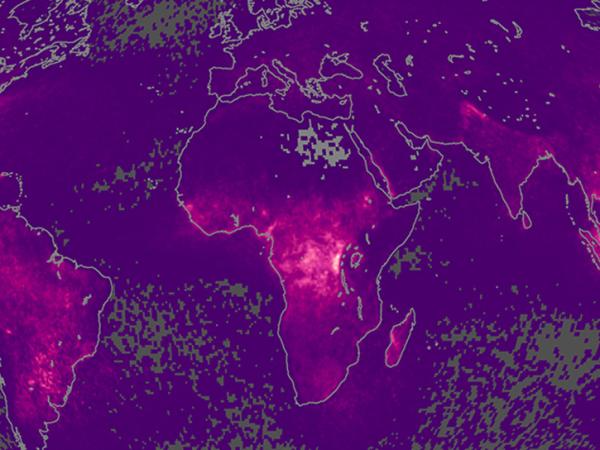GHRC DAAC specializes in taking core measurements related to a range of topics. Click on each topic link to learn more about related data, tools, learning resources, publications, and news.
Atmospheric Electricity
Atmospheric electricity refers to electrical phenomena that occur in Earth's atmosphere. These phenomena include lightning, atmospheric ionization, the air–Earth current, and other quiescent electrical processes. The existence of separated electric charges in the atmosphere is a consequence of many minor processes (spray electrification, dust electrification, etc.) and a few major processes (cosmic-ray ionization, radioactive-particle ionization, and thunderstorm electrification).
Precipitation
Precipitation refers to all hydrometeors (i.e., a product of condensation or deposition of atmospheric water vapor) formed in the atmosphere, including liquid, solid, or a combination of the two (e.g., resulting from incomplete melting or freezing or from accretion), that are large enough to fall as a result of gravity. It is also the amount, usually expressed in millimeters or inches of liquid water depth, of the water substance that has fallen at a given point over a specified period of time (precipitation rate).
Atmospheric Winds
Atmospheric winds refer to air in motion relative to the surface of Earth. GHRC DAAC holdings include measurements of ocean surface wind speed and direction from space-based microwave radiometers and vertical wind profiles from airborne instruments and dropsondes.
Atmospheric Water Vapor
Atmospheric water vapor is water present in the atmosphere in gaseous form. It is one of the most important of all constituents of the atmosphere. Its amount varies widely in space and time due to the great variety of both "sources" of evaporation and "sinks" of condensation that provide active motivation to the hydrologic cycle. Water vapor is important not only as the raw material for clouds, rain, and snow, but also as a vehicle for the transport of energy (latent heat) and as a regulator of planetary temperatures through absorption and emission of radiation, most significantly in the thermal infrared (the greenhouse effect). GHRC DAAC's archive holds measurements for water vapor, humidity, and precipitable water.
Atmospheric Temperature
Atmospheric temperature is a measure of temperature at different levels of Earth's atmosphere. It is governed by many factors, including incoming solar radiation, humidity, and altitude. GHRC DAAC holds space-based platform-derived temperature data from the sea surface level to ~41km or 2.5mb.
Cloud Hydrometeors
Clouds consist of microscopic droplets of liquid water (warm clouds), tiny crystals of ice (cold clouds), or both (mixed phase clouds). Cloud droplets initially form by the condensation of water vapor onto condensation nuclei when the supersaturation of air exceeds a critical value. GHRC DAAC has space-based platform-derived measurements of cloud liquid water and cloud top heights, as well as airborne observations of cloud hydrometeors.



